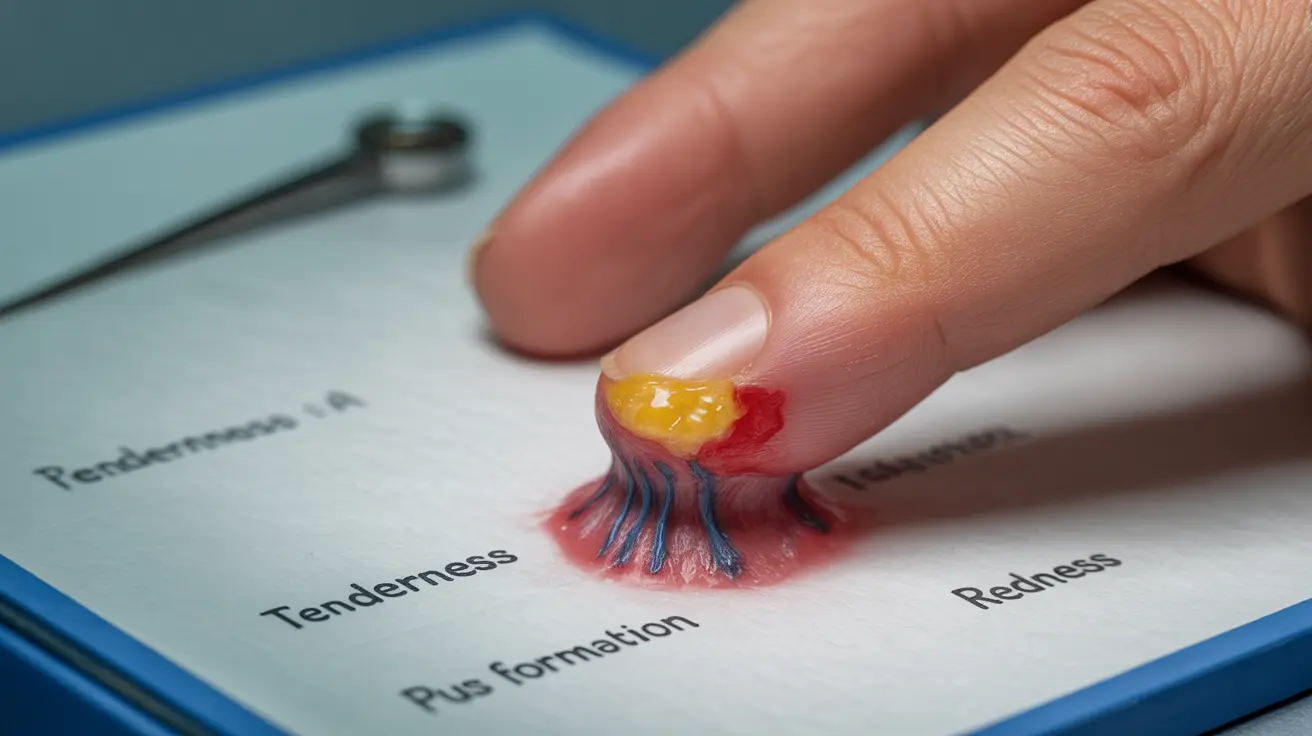An infected hangnail can quickly transform from a minor annoyance into a painful and potentially serious condition if not properly treated. Understanding how to identify, treat, and prevent infected hangnails is crucial for maintaining proper hand health and avoiding complications.
This comprehensive guide will walk you through everything you need to know about managing infected hangnails effectively, from home remedies to knowing when professional medical attention is necessary.
Understanding Infected Hangnails
An infected hangnail occurs when bacteria enter the small tear in the skin where a hangnail has developed. The most common type of infection is called paronychia, which affects the skin around the nail. The infection can be acute (short-term) or chronic (recurring), and proper identification is key to successful treatment.
Signs and Symptoms of Infection
Recognizing the signs of an infected hangnail early can help prevent more serious complications. Common symptoms include:
- Redness around the nail
- Swelling and tenderness
- Warmth in the affected area
- Pus formation
- Throbbing pain
- Skin that feels hard to the touch
Home Treatment Options
Many infected hangnails can be successfully treated at home with proper care and attention. Here are the most effective treatment methods:
Warm Water Soaks
Soak the affected finger in warm water with Epsom salt for 15 minutes, 3-4 times daily. This helps reduce inflammation and draw out any pus.
Antiseptic Application
After soaking, apply an over-the-counter antiseptic solution and cover the area with a clean bandage. Change the bandage daily or whenever it becomes wet.
Antibiotic Ointment
Apply an over-the-counter antibiotic ointment like bacitracin or neomycin to help fight the infection. Always keep the area clean and covered.
Prevention Strategies
Preventing hangnail infections is easier than treating them. Follow these preventive measures:
- Keep hands and nails moisturized
- Avoid biting or pulling at hangnails
- Use clean nail tools
- Wear protective gloves when washing dishes or cleaning
- Practice good hand hygiene
When to Seek Medical Care
While many infected hangnails can be treated at home, some situations require professional medical attention. Watch for:
- Severe pain or throbbing
- Infection spreading beyond the immediate area
- Red streaks extending up the finger or hand
- Fever or chills
- No improvement after 3-5 days of home treatment
Frequently Asked Questions
What are the most effective home treatments for an infected hangnail?
The most effective home treatments include warm water soaks with Epsom salt, applying over-the-counter antibiotic ointment, keeping the area clean and covered, and avoiding further trauma to the affected area.
How can I tell if my hangnail infection needs to be seen by a doctor?
Seek medical attention if you experience severe pain, spreading infection, red streaks extending up your finger or hand, fever, or if the infection shows no improvement after 3-5 days of home treatment.
What causes hangnails to become infected and how can I prevent it?
Hangnails become infected when bacteria enter the torn skin. Prevention includes keeping hands moisturized, avoiding nail biting, using clean nail tools, wearing protective gloves during wet work, and maintaining good hand hygiene.
Is it safe to trim or remove a hangnail when infected, and how should I do it properly?
It's best not to trim an infected hangnail as this could worsen the infection or spread bacteria. Focus on treating the infection first. Once healed, carefully trim hangnails using clean, sanitized nail tools.
What complications can arise from an untreated infected hangnail, especially for people with diabetes?
Untreated infected hangnails can lead to serious complications, particularly for people with diabetes. These may include cellulitis, permanent nail damage, or systemic infection. Diabetics should seek prompt medical attention for any nail infections due to their increased risk of complications.




